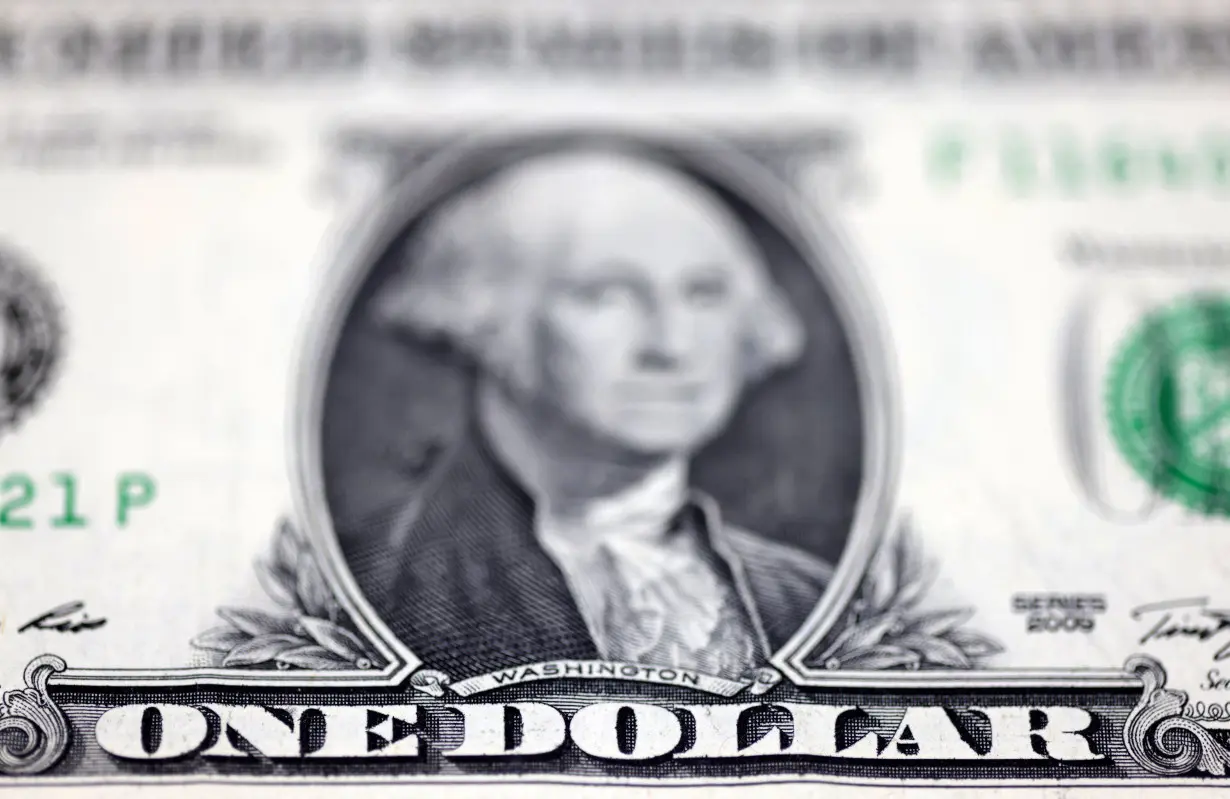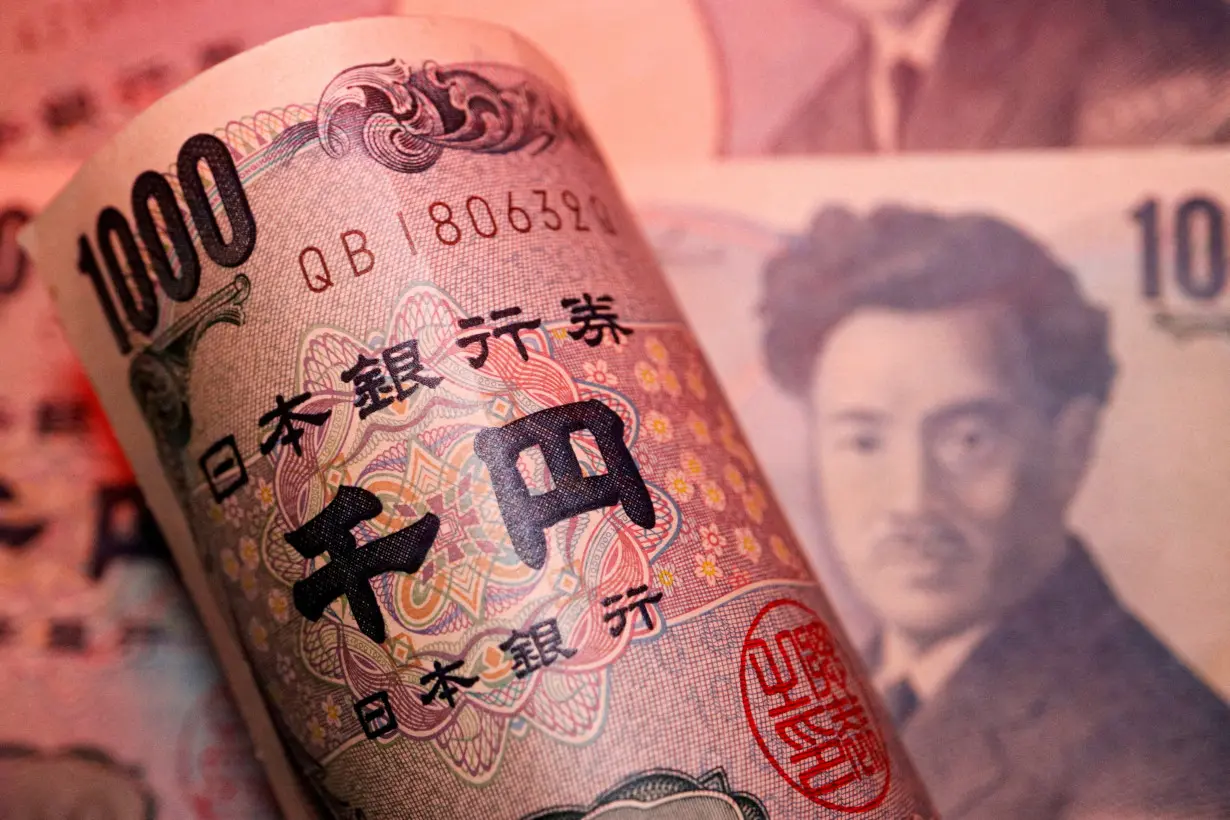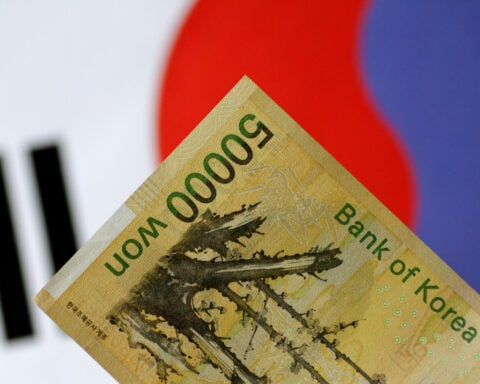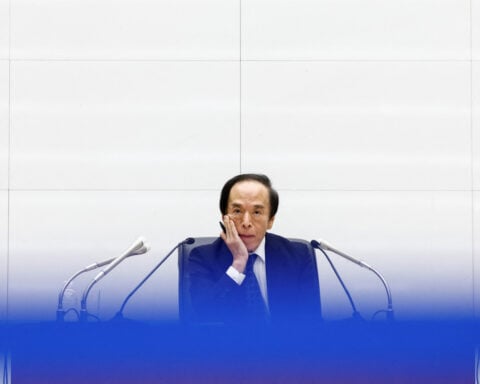By Alden Bentley
NEW YORK/LONDON/SINGAPORE (Reuters) -The dollar fell to its lowest in more than two months against the yen on Wednesday as short-yen carry trades were unwound ahead of next week's Bank of Japan meeting, with investors girding for a hawkish monetary officials to tighten policy.
The yen also rose to its highest since mid-May against the euro amid expectations that yield differentials that have made it costly for foreign investors to hold yen securities will narrow.
The dollar index, which measures the greenback against a basket of six currencies, including the yen and the euro, fell 0.12% to 104.35. It pared losses a bit after S&P Global said that its flash U.S. Composite PMI Output Indextracking the manufacturing and services sectors edged up to 55.0 this month, the highest level since April 2022.

"We're just looking at concerns over global growth and we're going to see through the rest of this week if that's going to continue, if the U.S. is going to fare differently," said Helen Given, associate director of trading at Monex USA, in Washington DC, highlighting China's surprise rate cuts this week as a catalyst for those worries.
"PMIs for U.S. this morning were fairly positive, but not blowing anything out of the water," she continued.
The main macro news of the week comes Thursday, with the first estimate of U.S. second quarter GDP, and Friday, with the Personal Consumption Expenditures Price Index, which the Federal Reserve relies on to gauge inflation.
Sources told Reuters earlier in the day said the Japanese central bank is likely to debate at its July 30-31 meeting whether to raise interest rates, and unveil a plan to roughly halve bond purchases in coming years.
The Fed holds its meeting the same days. While few expect it to begin lowering rates this month, there is a good chance Fed messaging for a pivot in September will become stronger, given months of declining inflation and slower growth.
Over three-quarters of economists polled by Reuters expect the BOJ to stand pat this month and possibly next move in September or October.
Recent rounds of suspected currency intervention have speculators rushing to close what had been profitable carry trades, where they borrowed in low-yielding yen and invested in assets of currencies with higher rates.
The yen is the best performing G-10 currency against the dollar in July so far.
The dollar weakened 1.07% to 153.92, hitting its lowest since May 6. The euro marked its lowest price since May 8 and was down 1.16% at 166.915 yen.
"Even if the BOJ delivers something that's not quite as hawkish as the markets are now expecting, there is still the risk that the Ministry of Finance could step in and prevent weakness in the yen if it should occur," said Brian Daingerfield, FX strategist at NatWest Markets in Stamford, Connecticut.
"There is of course the reality that the Fed appears to be closing in on the potential to start an easing cycle of its own here."
The euro fell 0.11% to $1.0839. Sterling was unchanged in late trade at $1.2905.
Commodity-linked currencies fell to multi-week lows. Oil prices are at their lowest in a month and a half and industrial metals like iron ore and copper hit 3-1/2-month lows on a gloomy outlook for Chinese demand.
The Australian dollar fell as much as 0.5% and wrapping up US$0.6584 was near a low hit in early June.
The Canadian dollar weakened to 1.3808 per US dollar.
The New Zealand dollar fell to US$0.5927, trading at levels last seen in early May.
"We're seeing softer demand in China and Asia in general and the kiwi and Aussie just being pulled down," said Jason Wong, senior markets strategist at BNZ in Wellington.
In cryptocurrencies, bitcoin gained 0.69% to $66,290.00. Ethereum declined 2.38% to $3,399.80.
(Reporting by Alden Bentley in New York, Alun John in London and Tom Westbrook in Singapore; Editing by Sam Holmes, Bernadette Baum, David Evans, Kevin Liffey and Aurora Ellis)

 Japan's Makino Milling requests changes to unsolicited bid from Nidec
Japan's Makino Milling requests changes to unsolicited bid from Nidec
 South Korea's Yoon likely to be held in a solitary cell
South Korea's Yoon likely to be held in a solitary cell
 Michigan Gov. Gretchen Whitmer, a potential 2028 candidate, wants to find common ground with Trump
Michigan Gov. Gretchen Whitmer, a potential 2028 candidate, wants to find common ground with Trump
 Trump's Greenland bid stirs debate in China about what to do with Taiwan
Trump's Greenland bid stirs debate in China about what to do with Taiwan
 Inflation duo takes centre stage
Inflation duo takes centre stage
 Manatees congregate in warm waters near power plants as US winter storms graze Florida
Manatees congregate in warm waters near power plants as US winter storms graze Florida
 As Los Angeles burns, Hollywood's Oscar season turns into a pledge drive
As Los Angeles burns, Hollywood's Oscar season turns into a pledge drive
 As fires ravage Los Angeles, Tiger Woods isn't sure what will happen with Riviera tournament
As fires ravage Los Angeles, Tiger Woods isn't sure what will happen with Riviera tournament
 Antetokounmpo gets 50th career triple-double as Bucks win 130-115 to end Kings' 7-game win streak
Antetokounmpo gets 50th career triple-double as Bucks win 130-115 to end Kings' 7-game win streak








